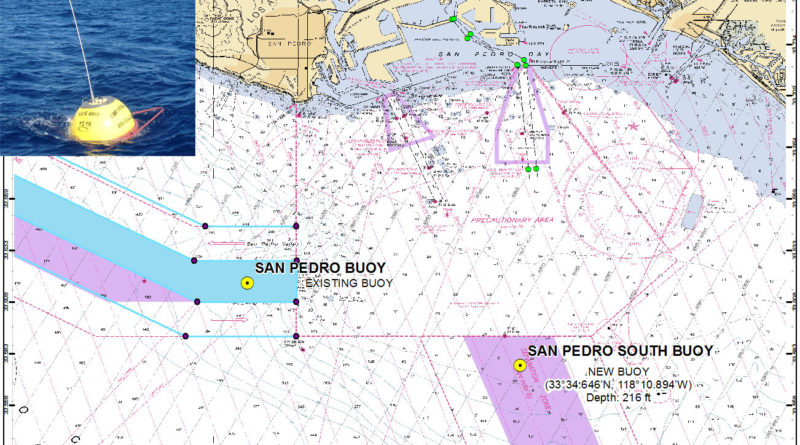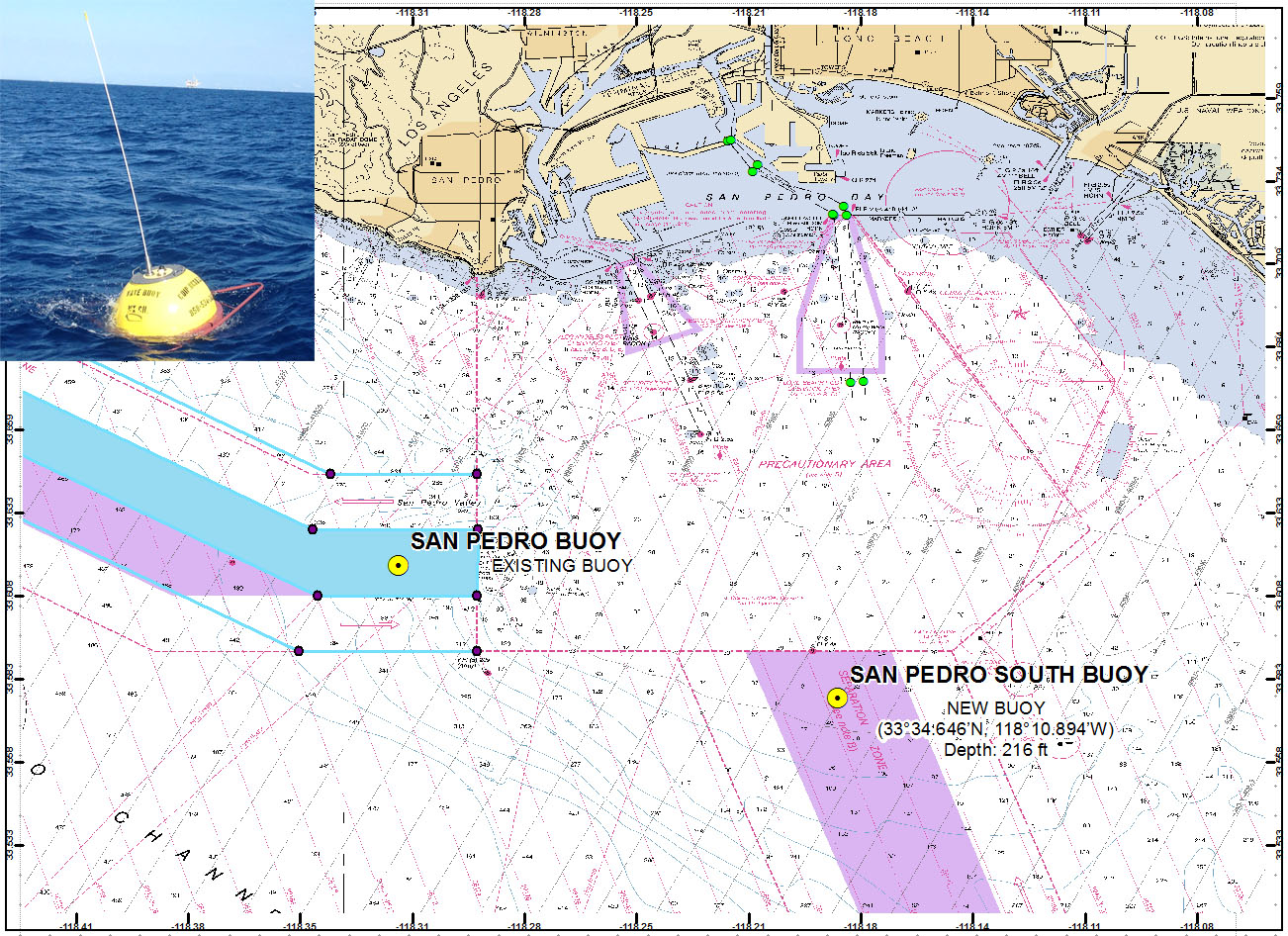Under Keel Clearance System buoy launched in San Pedro
SAN PEDRO – Recreational boaters transiting the Port of Long Beach are advised to be on the lookout for the newly deployed buoy launched in the South Pedro south bound shipping lane.
The Coastal Data Information Program (CDIP) based at the Scripps Institution of Oceanography at UC San Diego, deployed the wave buoy in the shipping land (33° 34.646’ N, 118 °10.894’ W, 216 feet depth) on Oct. 15.
According to CDIP, The newly deployed San Pedro South Buoy, funded by the U.S. Integrated Ocean Observing System (IOOS), will be used operationally by Jacobsen Pilot Service for validating oceanographic conditions to ensure the safe transport of vessel traffic transiting at the Port of Long Beach.
The buoy is only one component of a larger project to ascertain the Under Keel Clearance (UKC) of commercial vessels. In collaboration with federal, state and industry partnerships, the Dutch company PROTIDE will develop a model that provides the UKC information.
The Marine Exchange of Southern California in San Pedro will serve as the management entity for the project.
The PROTIDE UKC system will host a variety of products and services standardizing environmental observations and forecast products.
Wave data are extremely important during a high swell event. Vessels can pitch and roll, affecting their draft and potentially hitting the ocean bottom.
The National Oceanic and Atmospheric Administration (NOAA) National Weather Service (NWS) and the National Center for Environmental Prediction (NCEP) are in the process of developing a series of high resolution, nearshore wave models called the Nearshore Wave Prediction System (NWPS) that will provide accurate forecast guidance of waves and swell for the coastal zone that support such activities as maritime navigation and rip current forecasts.
Both the San Pedro and San Pedro South buoys will be used both in real-time for operations and also for wave model validation.
The products are provided by NOAA, NOAA’s NWS, NCEP, the Operational Oceanographic Products and Services (CO-OPS) – and the Office of Coast Survey (OCS).
The initial assessment is funded by Oil Spill Prevention and Response (OSPR) and the Port of Long Beach (POLB).
Data from this buoy is available through the CDIP website (cdip.ucsd.edu/?&nav=recent&sub=observed), the NOS PORTS website tidesandcurrents.noaa.gov/ports/index.html?port=ll) and NWS National Buoy Data Center (NDBC) website (ndbc.noaa.gov/). For further information email @cdip.ucsd.edu



